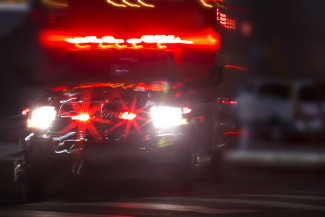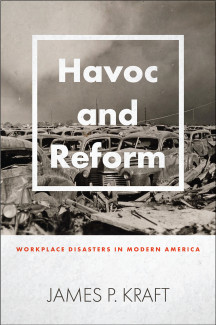
Johns Hopkins UniversityEst. 1876
America’s First Research University
Confronting Workplace Disasters

Havoc and Reform: Workplace Disasters in Modern America arose organically from my previous book, Vegas at Odds: Labor Conflict in a Leisure Economy, 1960-1985 (both published by Johns Hopkins). I was working on the latter project, reading old newspapers on a microfilm machine, when I came across photographs of the 1980 MGM Grand Hotel fire, a towering inferno that claimed eighty-five lives. The photos showed the MGM engulfed in thick black smoke, and heavy damage to the resort’s casino, hotel rooms, and dining areas. The fire, I figured, must have displaced a huge workforce. The MGM was among the world’s largest and most luxurious resorts. It operated on a 24-hour basis, seven days a week. Even if the fire had only killed a few of its employees, as proved to be the case, I assumed this was a workplace disaster. Or was it?
The literature on workplace disasters in American history generally suggests that these events occurred in the more distant past, somewhere in the industrializing East or Midwest. It brings to mind old factories and mines, underpaid workers new to industrial life, and capitalists who put profits over the well-being of their employees. Historical accounts of these tragedies are often bound up in the history of immigration, class conflict, and social activism. The infamous 1911 Triangle shirtwaist fire fits nicely into this narrative. The tragedy played out in an old New York City business district, before states had comprehensive workers’ compensation programs and child labor laws. Its victims were mostly young immigrant women who worked long hours for little money in an unsafe place. The villains were their employers, a pair of seemingly stingy businessmen who paid too small a price for their negligence.
After reflecting on such stories, I began to envision a manuscript about disasters that wrecked work sites far from the nation’s early industrial centers, in modern times. I wanted to explore the relevance of such events, not just for workers and their employers, but also for work settings and public policies. Unlike my previous books, this project would not rotate around the axis of capital versus labor. My larger concern was with the question of how we “moderns” have coped with these disasters, and with what success. Inspired by the MGM fire, I concentrated on tragedies in the greater Southwest after World War II, a region and period not often associated with this subject matter. I eventually focused on five large-scale catastrophes in the region, each of which affected workers in a different sector of the economy and occurred in a different decade of a long postwar period. My basic plan was to highlight the persistence and ubiquity of workplace disasters in American history.

Had I known the challenges of completing such a project, I might have dropped it altogether. Writing about multiple disasters in the realm of work demanded an investigation of contrasting industries and public agencies as well as different occupational groups and work environments. It required an understanding of various local and state building codes, federal safety laws, and new safety technologies. It also required a greater appreciation of my geographical and chronological setting, which meant wrestling with the transformative effects of World War II in the West. Perhaps more importantly, it demanded an exploration of large bodies of literature well beyond my areas of specialty. The field of disaster studies is rich and rapidly expanding, and much of its explanatory power comes from the social sciences.
Havoc and Reform is different than the book I originally imagined. When I began this project, I had not thought carefully about the strange relationship between forces of creation and destruction, or the strong links between disasters, new technologies, and safety reforms. I had little understanding of the roles played by policy entrepreneurs, advocacy coalitions, and the media in safety reform movements. Moreover, I knew nothing about the trials and tribulations of disaster victims. As I came to realize, some of the greatest struggles in the history of American workers had little to do with wages and working conditions, or the right to join unions. They centered instead on how workers dealt with the unexpected destruction of their work environments and, by implication, their physical injuries, lost incomes, and basic outlooks on life.
Despite its subject matter, my new book ultimately delivers an uplifting message. It shows how diverse groups of individuals and organizations met great challenges, and also cooperated in ways that made our risk-filled world a little safer. If disasters are not the “mother” of modernity, they are surely the mother of many safety reforms. These reforms did not come easily, however, or without great sacrifice.
Order Havoc and Reform: Workplace Disasters in Modern America at the following link: https://jhupbooks.press.jhu.edu/title/havoc-and-reform
James P. Kraft is a professor of US business, labor, and the American West at the University of Hawai'i at Mānoa. He is the author of Havoc and Reform: Workplace Disasters in Modern America, Stage to Studio: Musicians and the Sound Revolution, 1890–1950, and Vegas at Odds: Labor Conflict in a Leisure Economy, 1960–1985.



